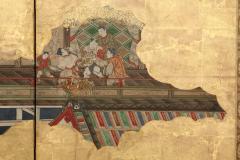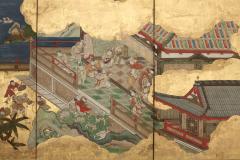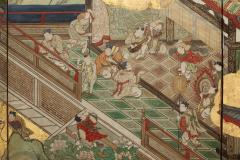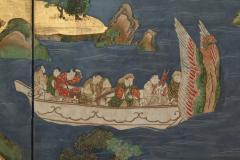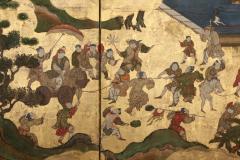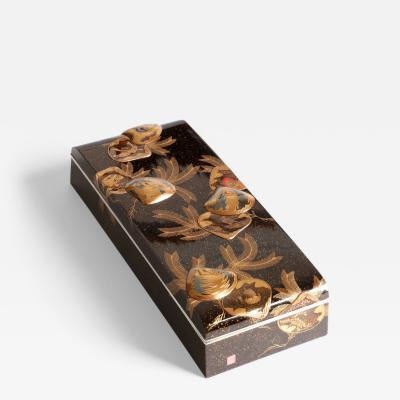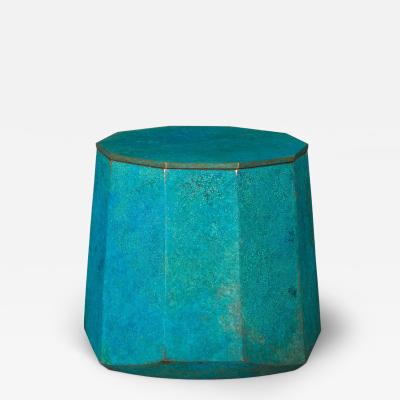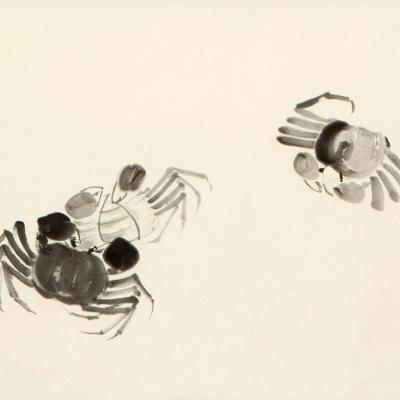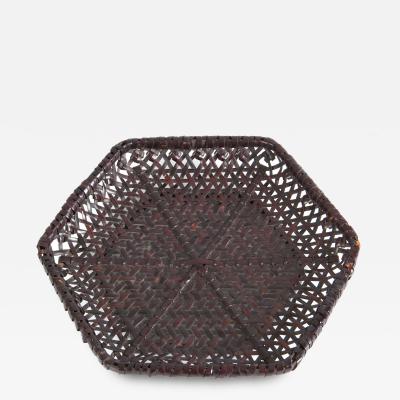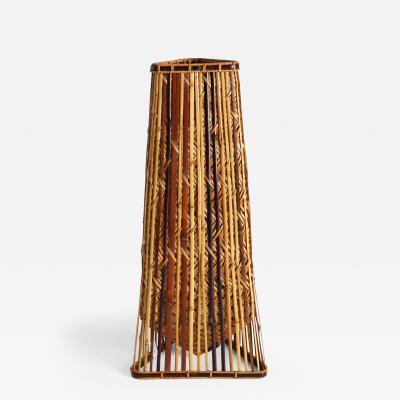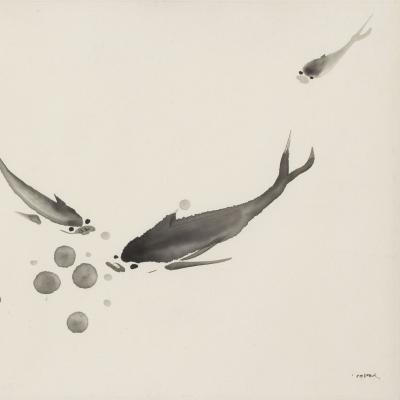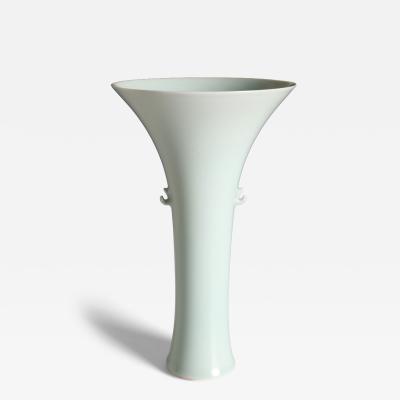Kano School Chinese Children Playing Games, 18th century
-
Description
Kano School
Chinese Children Playing Games, 18th century
Pair of six-panel folding screens; ink, mineral colors, gofun (white powdered shell), and gold on paper with gold leaf
Size 43½ x 101¼ in. (110.5 x 257.5 cm)
T-3222
Against a background of palatial buildings and gardens in scenes separated by gold clouds, some 200 Chinese boys enjoy a multitude of games and pastimes. On the right-hand screen we have cock fighting, music and dance, a mock procession with hobby horses, a game of oni gokko (blindman’s bluff), and fishing. The left-hand screen shows more music and dancing as well as boating and fishing, another procession—this time with an individual mounted on a shishi (lion)—acrobats, another game of oni gokko, a performing monkey, and other children playing with tops. Although these are children, their play mimics the adult world and incorporates a hierarchical structure expressed both by the relative sizes of the figures and by the privileged treatment received by some, including servants protecting them from the sun with parasols or serving them with rice cakes as they watch the fun from elevated positions indoors.
The origins of these intricate compositions can be traced to two strands of Chinese visual culture that reached Japan in the closing half century of the Ming Dynasty (1368 –1644) in the form of pictorial representations of, respectively, gamboling children and virtuous emperors. Although one or more Chinese children sometimes appear in earlier portraits of the Buddhist deity Hotei, it was not until the seventeenth century that they started to make frequent appearances in Japanese art, including not only painting but also lacquer and, later, ceramics and netsuke. They are known in Japanese as Karako, a term that seems to have been mostly used in connection with pictorial art, and specifically denotes children dressed in Chinese clothing, their hair often cut in Chinese style with three topknots. Their appearance at this time came close on the heels of a similar development in Chinese art and there are even examples of Chinese-made ceramic wares with Karako decoration that are thought to have been made specifically for the Japanese market.
The treatment of the Karako theme in this particular pair of screens also makes use of compositional and other details derived from a book first published in China in 1573, Dijian tushuo (in Japanese, Teikan zusetsu, Illustrated Stories of the Conduct of Chinese Emperors), which featured the exemplary behavior of 81 emperors, as well as 36 cautionary tales relating to those who fell short of the ideal. A copy was brought to Japan just over two decades later during the Korean campaigns of Toyotomi Hideyoshi (1536 –1598) and was inherited by his short-lived son Hideyori (1593 –1615) who commissioned a reprint in 1606. After the establishment of the Tokugawa shogunate, the Kano academy (see no. 3) started to make large-scale painted versions of Teikan zusetsu which share many features with these screens, including imposing buildings with brightly colored tiled roofs and checkerboard paving, an emphasis on courtly processions, fluttering banners, parasols, and a pervasive sense of hierarchy.
These screens are in the middle-size format known as chūbyōbu. Its dimensions are very close to a pair in the Metropolitan Museum of Art with Karako in paradisiacal scenery presided over by goddess-like figures, and both pairs were likely intended for private display, perhaps in the women’s quarters of an elite household.5 Another example, by Kano Dōshun (17th –18th century), features children playing in palatial settings. -
More Information
Period: 18th Century Styles / Movements: Asian, Traditional Incollect Reference #: 557332 -
Dimensions
W. 101.25 in; H. 43.5 in; W. 257.18 cm; H. 110.49 cm;
Message from Seller:
Thomsen Gallery, now located at 8 East 67th Street, New York City, NY 10065, specializes in important Japanese paintings, folding screens, hanging scrolls, ceramics, ikebana bamboo baskets, lacquerware, and contemporary works by select artists. Owned and directed by Erik and Cornelia Thomsen, the gallery brings decades of expertise in Japanese art to a global clientele, including private collectors and major museums. For inquiries, contact them at 212-288-2588 or info@thomsengallery.com.



















